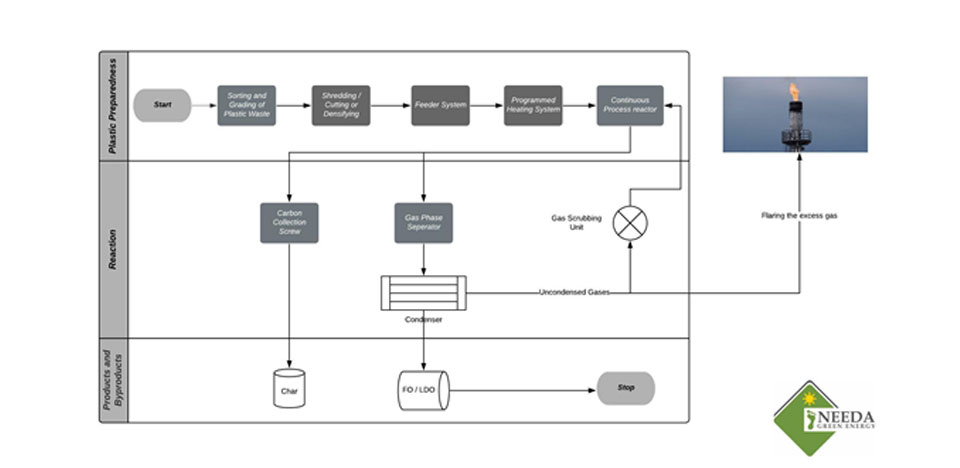Advanced Continuous Process
While Plastic is one the best inventions in the world, it will turn out to be highly dangerous to the environment if not handled properly. Though there are many traditional methods to handle the plastic waste; Pyrolysis, Waste to Energy etc.,. none of these technologies are environment friendly and release good amount of greenhouse gases into the environment.
After years of research and development, the engineers at Needa Green Energy came up with environment friendly technologies and solutions to handle the plastic waste that is generated from both households as well as industries.
USPs of Our Technology

Continuous
A cutting-edge technology that converts plastic waste into valuable fuels (LSFO) through a continuous, high-temperature decomposition process. This innovative approach enables efficient, scalable, and sustainable waste management, producing renewable energy sources while minimizing environmental impact.

Easy to Maintain
Our continuous pyrolysis process is designed to be highly reliable, efficient, and easy to maintain, minimizing downtime and reducing maintenance costs.

Low Operational Cost
The operation costs of our continuous pyrolysis process is significantly reduced, making it a more competitive and sustainable option.

Low Production Cost
Our process strictly adheres to Economies of Scale and Operational efficiencies to achieve Low Production Cost per unit.

Safe & Secured
Our continuous pyrolysis plant prioritizes a safe and secured environment through robust safety protocols, secure access controls, and rigorous environmental monitoring, ensuring the well-being of personnel and the surrounding community. By implementing cutting-edge safety and security measures, the plant minimizes risks and maintains a secure and sustainable operation.

Handles all type of plastics
Our continuous pyrolysis plant can process all types of plastic wastes, including polyethylene, polypropylene, polyvinyl chloride, polyethylene terephthalate, and polystyrene, converting them into LSFO. From household waste to industrial plastics, the plant's versatile technology can handle a wide range of plastic feedstocks, promoting a circular economy and reducing plastic pollution.

Economical
By leveraging economies of scale and reducing waste disposal costs, the plant provides a financially sustainable approach to plastic waste management. An RoI of 65% can be achieved using many optimization techniques.

High Returns
An RoI of 65% is achievable through practical approaches.

Indigenous
Our indigenously designed continuous pyrolysis plant showcases local innovation and expertise, tailored to meet the unique needs and challenges of regional plastic waste management, while promoting self-sufficiency and reducing reliance on foreign technologies.

